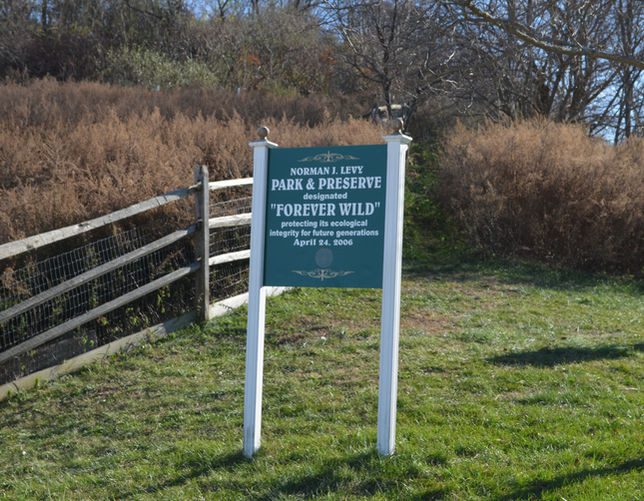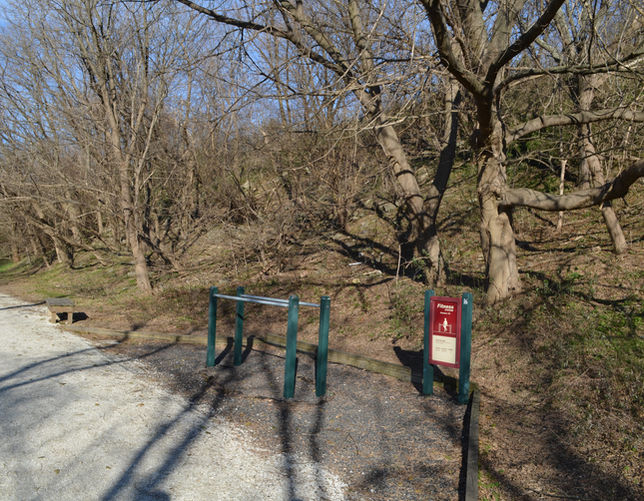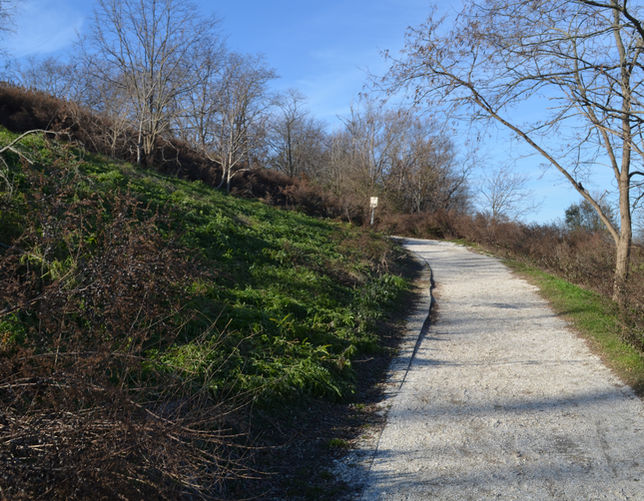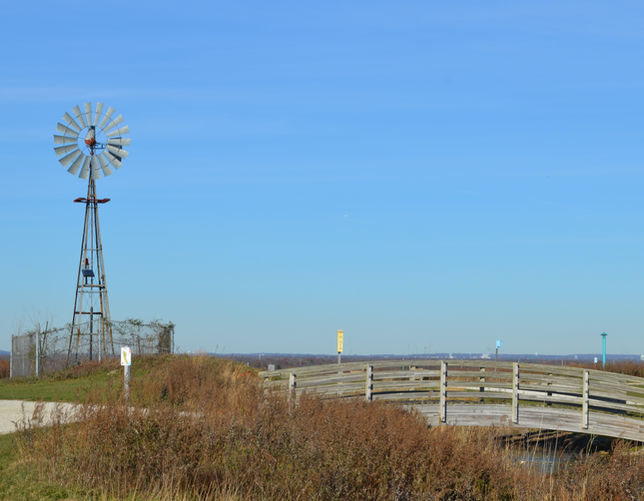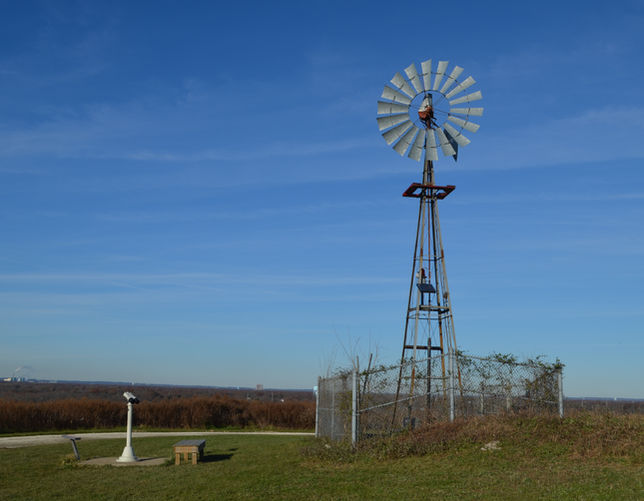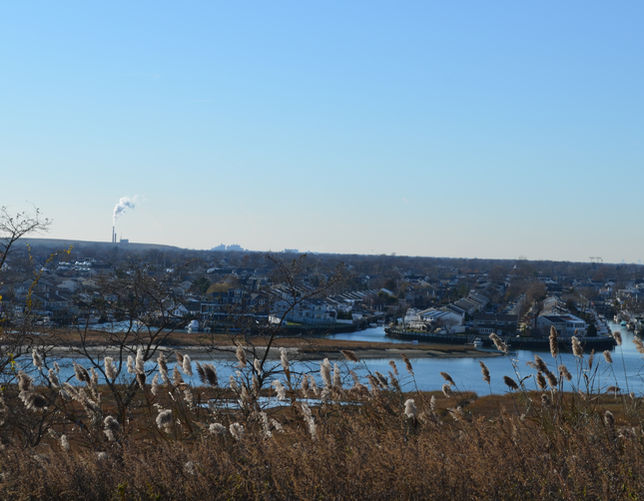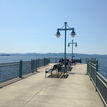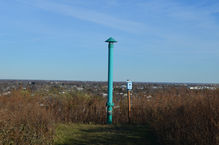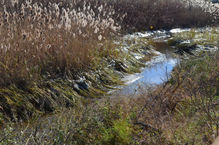
TRUMP OF
THE DUMP
THE SUBURBAN WASTE PROBLEM
As suburbia sprawled throughout Long Island, areas had to be designated for the increasing amounts of waste produced by the construction, maintenance and residents of the new suburbs. Typically, abandoned sand pits were re-purposed as landfills after their excavation level hit the water table, rendering them useless. Low-lying wetlands that could not be developed would also fall victim to landfills. Despite the eye-sore and smells these dumps created, anything dumped at one of these landfills had the potential to seep out into the environment and contaminate the ground-water, a source of drinking water and the sole aquifer source beneath the island.
John E. Conover, Jr., P.E.



Next City

Landfills in Long Island, NY
Rapid suburban expansion on Long Island following WWI meant a sharp increase in solid waste generation. The throw-away consumer culture of the era prompted the designation of several landfill areas around the island to collect the accumulating waste, with little regard to environmental consequences.
Grey: Decommissioned Landfill
Blue: Active Landfill as of 2018
Click Ctrl and scroll to zoom in on the map. Click each icon for details.
3091
Active Landfills in the US
6
Active Landfills on Long Island
4
General
Landfills
2
Ash Monofills

Period of Policy Making
In the mid 1970s, the federal government began to take action to organize and regulate waste in the United States. Two laws paved the way in 1976: the RCRA (the Resource Conservation and Recovery Act) and the TSCA (the Toxic Substances Control Act).
RCRA
RCRA
" [the act] protects communities and resource conservation. To achieve this, EPA develops regulations, guidance and policies that ensure the safe management and cleanup of solid and hazardous waste, and programs that encourage source reduction and beneficial reuse. "
Classifications:
Subtitle D: Non-Hazardous Waste
Regulation of design criteria, location restrictions, financial assurance, corrective action (cleanup), and closure requirements
Subtitle C: Hazardous Waste
The EPA sets criteria for hazardous waste generators, transporters, and treatment, storage and disposal facilities
epa.gov
TSCA
" [the act] provides the EPA with authority to require reporting, record-keeping and testing requirements, and restrictions relating to chemical substances and/or mixtures. Certain substances are generally excluded from TSCA, including, among others, food, drugs, cosmetics and pesticides. "
Requirements:
Notification of pre-manufacture of new chemicals
Including testing of these substances, when imported or manufactured commercially and complying with certification reporting
Maintenance of Chemical Inventory
As chemicals are commercially manufactured or imported they are added to the list which contains at least 83,000 chemicals
epa.gov
The Long Island Landfill Law (1983)
In 1983, the Environmental Protection Agency identified Long Island as the first sole-source aquifer area in New York State. This means that the island pumps all of its drinking water from underground sources, therefore any above-ground pollution will directly affect the drinking water below.
This law set specific standards for landfills in an effort to better manage waste disposal on Long Island and to protect drinking water. As a result, many non-conforming landfills had to develop a financial plan guarantee to correct any adverse environmental impacts or close all together.
Click the newspaper article to read further
What the Island's
Landfill Law Specifies
New York Times, 1989

NEW REQUIREMENTS
-
Must provide a financial guarantee to correct any environmental impacts
-
Must install a double lined, leachate collection system to catch any pollutants
-
Must be operated in a way to minimize migration of decomposition gasses beyond the property of the landfill
-
Cannot further accept industrial, commercial or hazardous waste of any kind
-
Cannot be located and operating within proximity to a wetland or a floodplain

Closure of Landfills & A New Life
By December 18, 1990, waste could no longer be dumped into deep re-charge areas which could threaten drinking water. Many landfills were located on coastal plains and wetlands where these re-charge areas were abundant, forcing their closure. The next decade saw numerous town boards scrambling to close these landfills.
Closed landfills posed an interesting problem to their respective town. In some cases, several acres of land were now available to be re-purposed by the community. Eyeing the world's oldest landfill park in Virginia Beach, VA - Mount Trashmore, some residents and town representatives envisioned a park for a recently closed landfill on the southern shore of Long Island in Merrick, NY.
Click a newspaper article to read further
Long Island Flounders in Closing Landfills
A Garbage Heap Turns to Paradise; More Island Landfills Could Become Parks
What It Takes to Turn a Massive Staten Island Landfill Into a Park
Case Study: Merrick Landfill
Norman J. Levy Park
Originally a marshland, waste began accumulating in 1950 eventually forming the Merrick Landfill. The landfill eventually rose to the height of an eleven story building at its peak, spanning over 50 acres and containing almost four million cubic yards of waste.
In 1983, the landfill was closed due to new legislation, and a massive capping operation began.
The Overlook Park and Sanctuary civic group led by Jay J. Pitti began campaigning for a park to be constructed on the site. Thus, the cap was covered with dirt and 50,000 plantings were arranged at a budget of $17 million in 1999.
Click a marker on the map for info
The park was opened to the public on October 22nd 2000 and was dedicated to the late New York State Sen. Norman J. Levy, a Merrick resident and a champion for the environment.
The park plan was realized at a cost of $15 million rather than the $57 million required for a full capping and closure.
The park now provides numerous amenities for the public to enjoy, including a scenic overlook with views of New York City on a clear day. A giant compass on the summit directs attention to neighboring landfills.
Great care was taken to use native species of trees and foliage in the restoration. The park attracts several species of birds and small animals that thrive in the protected areas.
Scroll through the photo gallery, hover for info
Image Credit: Alec Rovensky
Town of Hempstead
Norman J. Levy Park Reviews
Oceanside Landfill
Pinch your nose to the beach
The Oceanside landfill is located adjacent to Long Beach Road, a major corridor that connects the north shore to the south shore. In the summer time, the road is swarmed by eager beach-goers, heading to the narrow coastlines of Long Beach.
Shortly after its closure in 1989, many people reported smells along the road near the landfill during hot summer days, as well as in local residential communities and the neighboring public elementary and middle school fields.
The landfill itself is no longer operational and has underwent some preliminary capping. A transfer station remains operational there, accepting mostly yard clippings and some metal waste. It is then shipped out from site.

Protests
In June 2003, a series of protests led by two members of the county legislature were held in front of the transfer station as many locals were complaining of strong odors coming from the site.
The town, however, notes that only one formal complaint was sent about odor, calling the protest "a cynical and shameless attempt, by lawmakers seeking re-election, to mislead residents as to the current status of this facility."
Click the newspaper article to read further
In Oceanside, a Protest Over a Waste Station






Video Resources
Energy Generation
Perforated pipes draw enough methane gas from the landfill's decaying garbage to run nine diesel generators that supply enough electricity for 14,000 homes.
These generators are currently running in the former incinerator building and are actively providing energy to the community. The illustration on the right demonstrates this process.


Proposal

Facilities: administration building, restrooms, boardwalk dining, ranger station, maintenance garage, existing incinerator
Amenities: Sculpture park, fitness/biking trail loop, nature walk, boardwalk, marina, fishing pier, coastal overlook, duck feeding pier, peak overlook, baseball diamonds, tennis court, slide, zip-lines
Planning: Three plateau ponds, increased access paths, steady slope paths, boat access, connections to existing roads and parks







